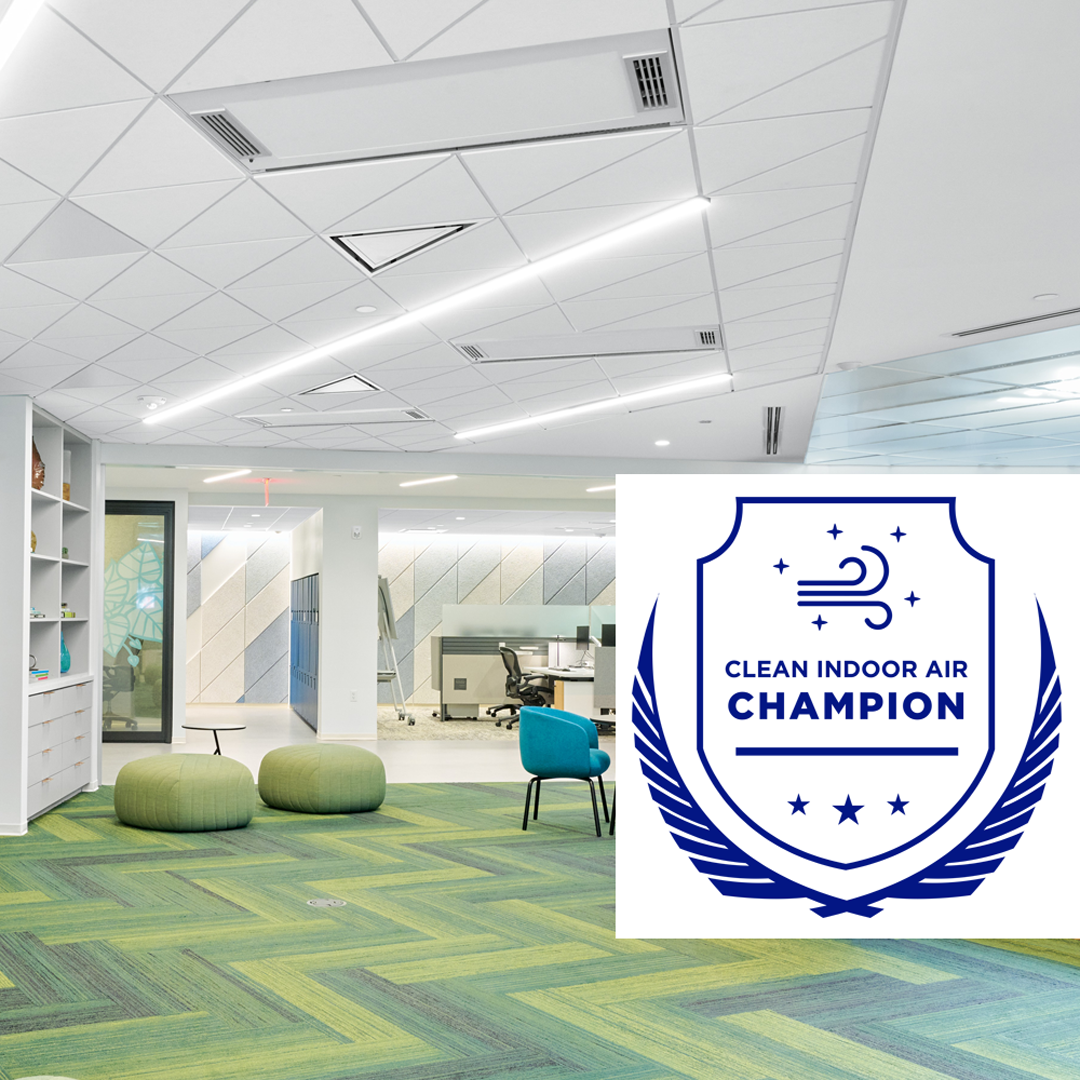
An Indoor Air Quality Revolution
We’ve learned the importance of indoor air quality, in our schools, hospitals and every building we enter. New guidance from the Centers for Disease Control and Prevention (CDC) provides concrete recommendations building owners should follow to create the healthiest spaces where we spend the most time. The CDC’s new Health Based Ventilation guidance* states, when possible, aim for 5 or more air changes per hour (ACH) of clean air to help reduce the number of germs in the air. This represents an important step forward in achieving cleaner indoor air for all.
Explore the different factors and guidelines to effectively improve indoor air quality.
The Impact of Air
Indoor Environment Quality – Air
A healthy space equals improved indoor environmental quality (IEQ). IEQ consists of multiple facets, including air. Learn how air quality impacts overall occupant well-being.

Dr. Joe Allen was instrumental in the creation of the Clean Air in Buildings Challenge and is the leader of Harvard Healthy Buildings Program and 9 Foundations
Highlighted Solutions
Clean Air In Buildings

Armstrong World Industries signs the Clean Air in Buildings Challenge
The U.S. Environmental Protection Agency (EPA) Launched the Clean Air In Buildings (CAIB) Challenge to promote improving the air quality and health of the buildings we spend the most time in.
The Clean Air in Buildings Challenge outlines four actionable steps to create better air quality in all public spaces:
- Create a clean indoor air action plan
- Optimize fresh air ventilation
- Enhance air filtration and cleaning
- Conduct community engagement, communication, and education
For many years Armstrong has worked to enhance the air quality in spaces where employees gather and collaborate, making upgrades using air purification solutions, as well as many of our SUSTAIN ceilings. We’re committed to creating Healthy Spaces & the Clean Air in Buildings Challenge as we renovate more spaces at our plants and corporate campus.
Read the press release here.
IAQ Resources
Contact
* Source: Improving Ventilation In Buildings